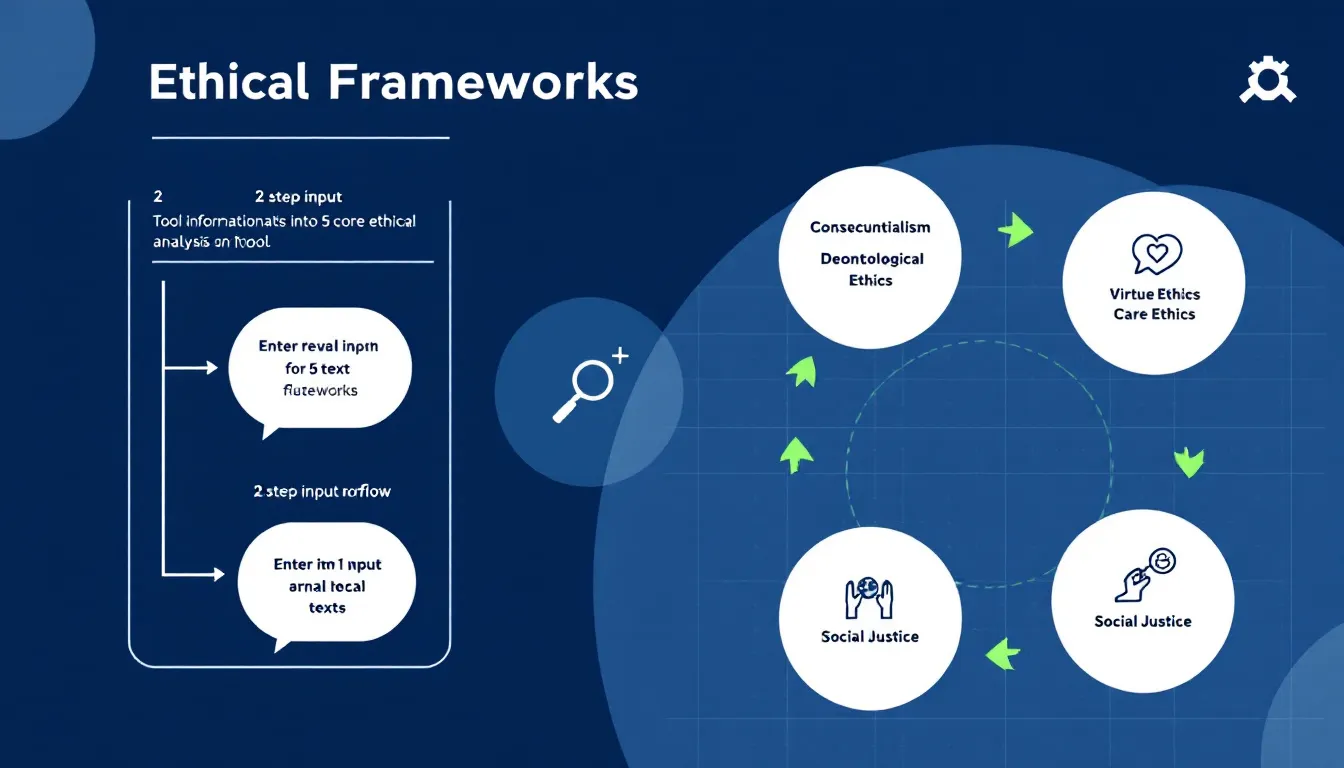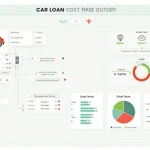Is this tool helpful?
How to Use the Ethical Analysis Tool Effectively
Using our comprehensive Ethical Analysis Tool involves two simple steps that help generate a detailed ethical evaluation of any moral dilemma or situation:
- Enter your ethical situation or dilemma in the main text field. For example: “Should a self-driving car prioritize the safety of its passengers over pedestrians in an unavoidable accident scenario?”
- Provide additional context in the second field if needed. For instance: “The car manufacturer must program decision-making algorithms that will determine how the vehicle responds in emergency situations.”
Input Guidelines for Better Results
To get the most insightful analysis, consider these best practices:
- Be specific and detailed in describing the situation
- Include relevant background information
- Mention all stakeholders involved
- State any existing constraints or limitations
Understanding the Ethical Analysis Tool
The Ethical Analysis Tool is an advanced decision-support system that helps individuals, professionals, and organizations navigate complex moral dilemmas through a structured analytical framework. It combines various ethical theories and principles to provide a comprehensive evaluation of moral situations.
Core Components of the Analysis
- Stakeholder identification and impact assessment
- Evaluation through multiple ethical frameworks
- Consideration of short-term and long-term consequences
- Analysis of competing moral principles
- Practical recommendations and solutions
Benefits of Using the Ethical Analysis Tool
For Individual Decision-Making
- Structured approach to moral reasoning
- Enhanced clarity in ethical decision-making
- Reduced personal bias through systematic analysis
- Documentation of ethical reasoning process
For Organizations
- Standardized approach to ethical evaluation
- Improved stakeholder communication
- Risk mitigation in decision-making
- Enhanced corporate social responsibility
Practical Applications and Problem-Solving
Business Ethics Scenarios
Consider this example: “Should a company continue manufacturing in a developing country where labor standards are below international norms but where the company’s presence significantly benefits the local economy?”
Sample Analysis Output:
- Stakeholders: Workers, local community, shareholders, company management
- Ethical principles: Human rights, economic justice, corporate responsibility
- Consequences: Employment opportunities, economic development, potential exploitation
- Recommendations: Implement improved labor standards while maintaining economic benefits
Healthcare Ethics Applications
Example scenario: “Should medical resources be allocated based on probability of survival during a pandemic?”
Analysis Components:
- Stakeholder consideration: Patients, healthcare workers, society at large
- Ethical frameworks: Utilitarianism, justice, human dignity
- Practical implications: Resource allocation, fairness, societal impact
Real-World Use Cases
Environmental Ethics
A corporation evaluating whether to implement costly environmental protection measures that exceed legal requirements but would reduce profitability.
Educational Ethics
Universities deciding whether to maintain standardized testing requirements while considering equity and academic excellence.
Technology Ethics
Social media platforms balancing user privacy with content moderation responsibilities.
Frequently Asked Questions
What types of ethical situations can be analyzed?
The tool can analyze any moral dilemma or ethical situation, including personal, professional, organizational, or societal issues.
How detailed should the situation description be?
Provide enough detail to understand the context, stakeholders, and key ethical considerations. Generally, 3-4 paragraphs are sufficient.
Can the tool analyze multiple related ethical issues?
Yes, the tool can evaluate interconnected ethical concerns and their relationships within a broader context.
How can I best implement the recommendations?
Consider the analysis as a framework for decision-making, adapting recommendations to your specific context while maintaining ethical principles.
Is the tool suitable for group decision-making?
Yes, the tool can facilitate group discussions and help reach consensus on ethical decisions by providing a structured analysis framework.
Can I use the analysis for documentation purposes?
Yes, the detailed analysis can serve as documentation of ethical decision-making processes for organizational records or future reference.
How often should ethical analysis be conducted?
Regular ethical analysis is recommended for ongoing situations or when new factors emerge that might affect the ethical implications of a decision.
What makes a good ethical analysis question?
Good questions are specific, clearly stated, and include relevant context about stakeholders and potential impacts.
Advanced Features and Considerations
The tool incorporates multiple ethical frameworks including:
- Consequentialism – evaluating outcomes and impacts
- Deontological ethics – examining duties and principles
- Virtue ethics – considering character and values
- Care ethics – analyzing relationships and responsibilities
- Social justice perspectives – evaluating fairness and equity
Integration with Decision-Making Processes
Organizations can integrate the tool into their:
- Strategic planning processes
- Risk management frameworks
- Corporate social responsibility initiatives
- Professional development programs
- Policy development procedures
Enhanced Analysis Features
- Structured evaluation methodology
- Multi-stakeholder impact assessment
- Comprehensive ethical framework application
- Practical recommendation generation
- Documentation and reporting capabilities
Important Disclaimer
The calculations, results, and content provided by our tools are not guaranteed to be accurate, complete, or reliable. Users are responsible for verifying and interpreting the results. Our content and tools may contain errors, biases, or inconsistencies. We reserve the right to save inputs and outputs from our tools for the purposes of error debugging, bias identification, and performance improvement. External companies providing AI models used in our tools may also save and process data in accordance with their own policies. By using our tools, you consent to this data collection and processing. We reserve the right to limit the usage of our tools based on current usability factors. By using our tools, you acknowledge that you have read, understood, and agreed to this disclaimer. You accept the inherent risks and limitations associated with the use of our tools and services.







